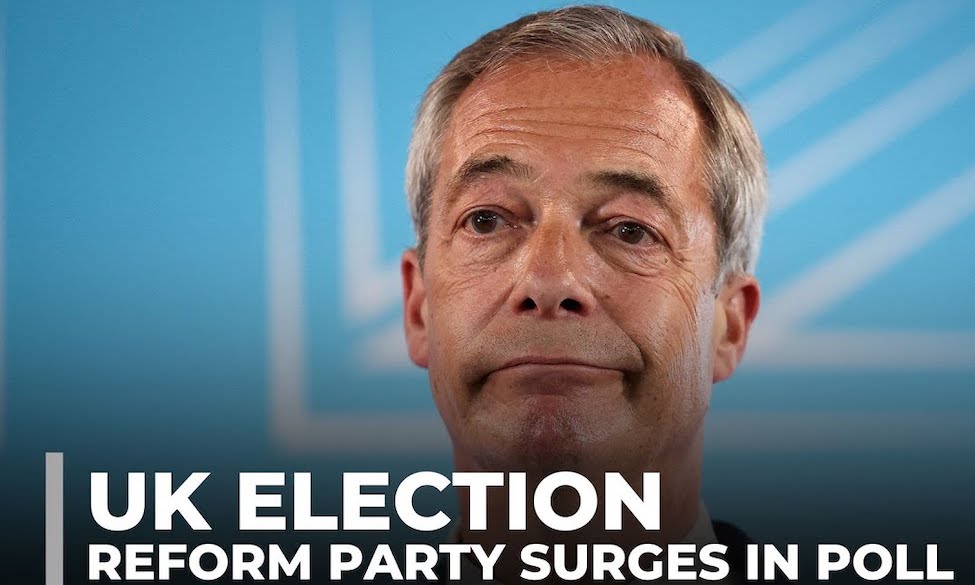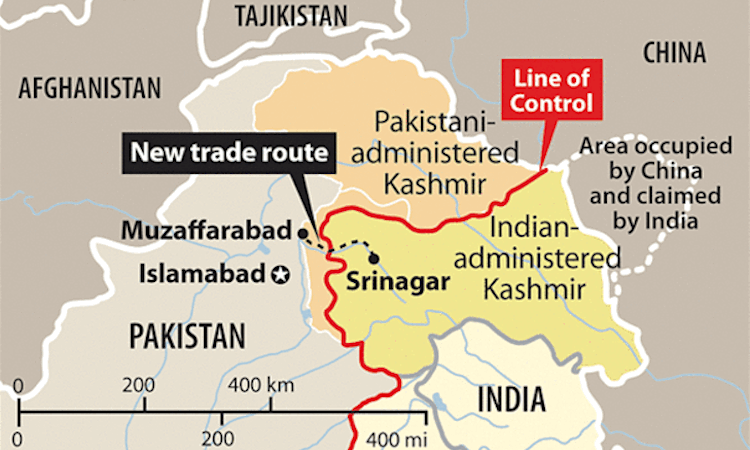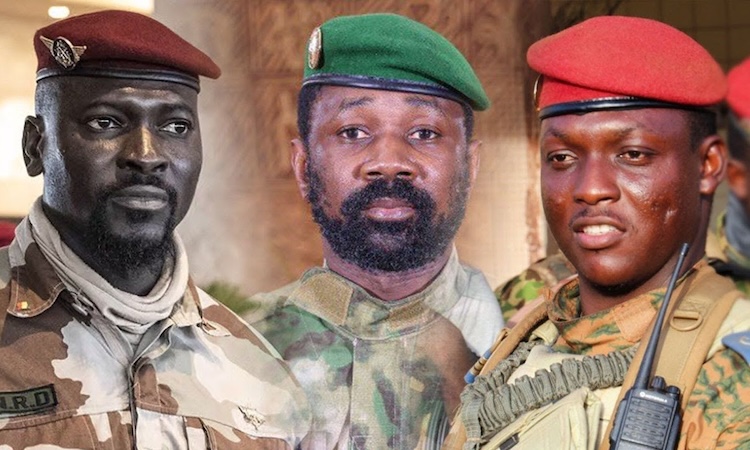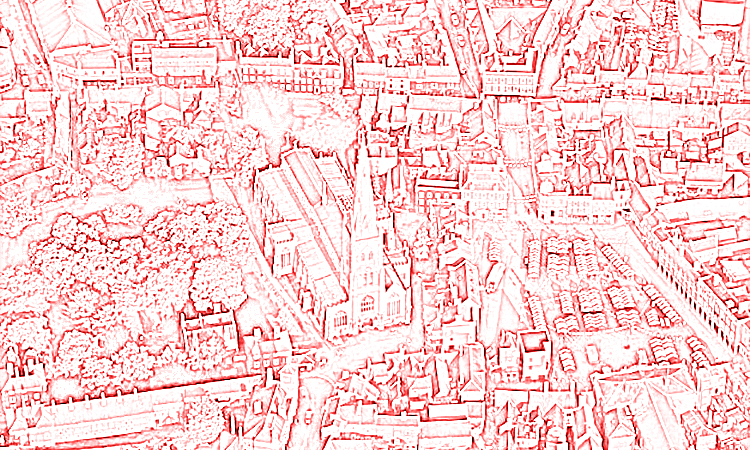The International Monetary Fund (IMF) was founded at the Bretton Woods conference in July 1944. This financial agency presents an image of itself as a democratic organisation that works “to achieve sustainable growth and prosperity for all of its 190 member countries … by supporting economic policies that promote financial stability and monetary cooperation”.
Nothing could be further from reality, however. Not only is the IMF not a democratic organisation but, as this article will show, the policies that it promotes favour only a handful of countries.
The decisions of the IMF are related to the ownership of SDRs (special drawing rights), known as the ‘quota’, which by reflecting the relative position of a country in the world economy, determines its voting power. Thanks to this self-perpetuating formula, the United States commands 16.5 percent of IMF votes, while the G7 countries combined (Canada, France, Germany, Italy, Japan, United Kingdom, United States) command 41.25 percent.
In a nutshell, the imperialist countries collectively, and in practice the dominant US imperialists, decide IMF policies, while the 171 non-imperialist countries that together hold less than half of the votes, have to obey them.
The cure-all panacea of the IMF for any economy has always been ‘austerity’. In bourgeoise economic lingo, this is euphemistically referred to as ‘fiscal consolidation’ – a process aimed at ‘closing the gap’ between public income and public expenditure. In plain language, this inevitably means slashing pensions, healthcare and education services; cutting the salaries of doctors, teachers and other public servants; selling off publicly owned companies to international investors; cutting taxes to the benefit of corporations and banks; and implementing a raft of macroeconomic policies that will favour international finance capital.
To implement these policies, the IMF relies on a so-called ‘surveillance process’, defined as “monitoring the economic and financial policies of member countries and providing them with policy advice … by recommending appropriate policy adjustments”. This in turn must be facilitated by a suitably servile comprador bourgeoise, whose members are willing to assist in this process of looting in return for a few tasty morsels from the imperialist banqueting table, all while the masses are being reduced to destitution.
In his powerful The Open Veins of Latin America, Eduardo Galeano pointed out: “With the magical incantation of ‘monetary stabilisation’, the IMF – which not disinterestedly confuses the fever with the disease, inflation with the crisis of existing structures – has imposed on Latin America a policy that accentuates imbalances instead of easing them … liberalises trade by banning direct exchanges … forces the contraction of internal credits … freezes wages, discourages state activity. To this programme it adds sharp monetary devaluations.” (1971, p220)
The people of Latin America, Africa and Asia have been suffering from IMF-imposed austerity for decades. For Argentina, the story of deception via its external debt started earlier. In 1824, Buenos Aires negotiated a loan with Britain’s Baring Brothers & Co bank. From the £1m agreed, the country received only £570,000 – not in gold as had been agreed but in paper notes agreeing the sale of British commodities at a price of their choosing! The interest on this extremely one-sided loan soaked up most of the country’s revenues for several decades. After successive rounds of refinancing the, ‘loan’ had been inflated to £4m, and was finally paid off 124 years after it was taken out by the government of Juan Perón in 1947.
At the time of writing, yet another debt crisis is creating the conditions for the complete collapse of Argentina’s economy. As has happened at other times of harsh neoliberal austerity regimes (1976-83, 1989-99 and 2015-19), Argentina looks as though it is heading for bankruptcy.
The military junta and Argentina’s first neoliberal experiment
The military coup of March 1976 provided the opportunity to implement neoliberal policies for the first time in Argentina. During the junta’s rule (1976-83), the country’s industrial base was destroyed, 20,000 manufacturing businesses were closed, and the value added by Argentinean industry, including construction, as a percentage of GDP dropped from 50.89 in 1976 to 41.55 percent in 1983.
As a result, the once strong and organised proletariat, which had fought fiercely against dictatorships earlier in the century, disappeared and many workers’ rights were eliminated. As the country moved from production to financial profiteering, the masses were impoverished as the country’s wealth was hoovered up by big corporations and international financial institutions.
Before being kidnaped and murdered, Argentine writer Rodolfo Walsh wrote to the military junta: “The economic policies of this junta – which follow the formula of the International Monetary Fund that has been applied indiscriminately to Zaire and Chile, to Uruguay and Indonesia – recognise only the following as beneficiaries: the old ranchers’ oligarchy; the new speculating oligarchy; and a select group of international monopolies headed by ITT, Esso, the automobile industry, US Steel, and Siemens, which Minister Martinez de Hoz and his entire cabinet have personal ties to.” (24 March 1977)
During this process, thousands of Argentineans were detained, tortured and killed, and people around the globe learned a new word: “desaparecidos” (the disappeared). Thanks to the good will of the IMF, Argentina’s external debt grew from $7.9bn in 1976 to $46bn in 1983. As one of its last acts in government, the junta nationalised all private debt, making the people of the country responsible for loans taken out by bankers and landowners.
Unable to pay this huge debt, Argentina has never been in a ‘normal’ state since; its ‘external debt’ became an ‘eternal debt’, dictating every aspect of economic and social life.
Democracy returns but the eternal debt remains
In 1983, the first democratically elected government following the junta decided not to reject the external debt inherited dictatorship but to honour it. Thus the government of Raúl Alfonsín, which had incarcerated the junta criminals for their human rights abuses continued the junta’s policy of surrendering control of the economy to the IMF and its monitoring missions.
As Fidel Castro correctly pointed out in 1985: “How can a government and a country that has to go every month to discuss with the International Monetary Fund what it is able to do at home be called independent? It is a fiction of independence, and we see this as a national-liberation struggle, which can truly bring together, and for the first time in the history of our hemisphere, all social strata in a struggle to achieve true independence.”
Between 1984-88, IMF-imposed policies continued to be enacted, to the benefit of imperialist corporations and financiers. The result was that, despite some success in curbing inflation for a short period in 1985-86, the economy never recovered. In 1989, the Alfonsín government’s last year in office, the IMF withdrew financial support to Argentina in response to missed interest payments, pushing the country into a crisis.
Inflation became hyperinflation (reaching a high of more than 3,000 percent annually) and elections were called six months early. In the end, thanks to the recommended policies of the IMF, the debt continued to grow from the $46bn that had been inherited in 1983 to $65bn in 1989.
Everything was ready for a second neoliberal experiment.
How a popular leader become a neoliberal
After the failure of the Alfonsín government, the new president was elected on a platform of social justice, promising to defend jobs, salaries and publicly-owned companies, and to improve the life of millions in the tradition of Peronism. Having been installed in office, however, he changed sides and become the president of the landowners, big corporations and banks.
With the support of the IMF, Carlos Menem (1989-99) implemented the recommendations of the ‘Washington consensus’ and applied the mantra of neoliberalism: privatisations, cuts to social expenditure, and further opening of the economy. The first step was to sell off all the publicly-owned companies that had been created through the efforts of several generations of Argentinians. Gas, oil, electricity, telephone, water, airlines and railroads all disappeared as public assets, their wealth being transferred so as to make foreign corporations and corrupt politicians richer at the expense, once again, of the Argentine people.
This was followed by a cut in public social expenditure via reductions in spending on education, healthcare and social security, and via the privatisation of state-held pensions assets. Finally, the import duties were slashed, to the benefit of overseas monopoly corporations, allowing foreign goods to flood Argentina’s internal market. The consequent destruction of Argentinean industry, as initiated by the military junta, was now complete.
To sustain these policies, the government set a one-to-one exchange rate between the US dollar and the local currency (known as the convertibility law), allowing foreign investors to exchange dollars for pesos, invest the pesos at an interest rate higher than the global IRR (internal rate of return) and then, months later, convert the pesos back to dollars. This operation, known as carry-trade, favoured big investors from around the world to the further detriment of the country’s finances, and was supported by the IMF, which continued lending money to Argentina.
In the final years of the Menem government, the country’s economy deteriorated rapidly, poverty and inflation increased, and the country fell into a deep recession in 1998. Corruption was rampant, and anti-government resistance through the first organised cacerolazos (people making noise by banging pots or pans to protest) was on the rise.
The IMF had done its job well. During this period, Argentina’s external debt grew to 133 percent of GDP, from $65bn in 1989 to $152bn ten years later. The second neoliberal experiment was reaching its end.
Elections and the 2001 collapse
The next government arrived promising to resolve the economic crises and fight corruption. Under the direction of the IMF, however, it continued to apply all the same policies that had failed the country before.
In August 2001, as foreign deposits were leaving the country, Argentina was unable to pay the interest on its debt and requested an extension of the arrangement. IMF managing director Horst Köhler demanded the substitution of the local currency by the US dollar, and while the government hesitated, the IMF withdrew support.
As the economy plummeted, money withdrawals increased, and the government decided to freeze all bank deposits (a measure known as the corralito).
Popular protest increased and, incapable of resolving the crisis, the government announced a state of siege. During the ensuing December riots, 36 people were killed by police in the streets. President Fernando de la Rua (1989-2001) resigned on 20 December, and the crisis-hit country had five presidents during the two weeks that followed.
Under the slogan “All of them must go!” (Que se vayan todos!), millions of people participated in neighbourhood assemblies, occupying unused land and implementing workers’ self-management in hundreds of factories.
In the end, Argentina defaulted on its public debt (at that time $152bn), abandoned the fixed exchange rate by devaluing the peso (40 percent in January to around 300 percent at the end of the first semester of 2002), with the result that production collapsed and high levels of unemployment and poverty become the norm.
IMF out of Argentina
After the 2001 default, the new government of Nestor Kirchner (2003-07) developed a strategy for undermining the neoliberal agenda that had been responsible for the country’s economic collapse. His government worked to eliminate the permanent interference, recommendations and pressure from the IMF.
In 2005, to the dismay of the financial centres, the President Hugo Chávez strengthened Venezuela’s relationship with Argentina. The Bolivarian government bought $2.4bn of Argentina’s debt, providing a welcome boost to the central bank reserves and helping the country to break its dependency on the IMF for debt refinancing.
By repaying in full the $9.81bn owed to the IMF, Argentina gained financial independence from the institution’s endless negotiations and recommendations, all of which were unfailingly unfavourable in social and economic terms to Argenina’s people. The repayment followed a similar move by President Lula da Silva of Brazil, whose Workers party government had paid off its IMF debt in full two days earlier.
For the first time, Latin America’s two largest economies were in a position to develop social policies that would improve the life of their people. As President Kirchner pointed out: “With this payment, we bury an ignominious past of eternal, infinite indebtedness.”
The volume of the inherited external debt didn’t change with the payment to the IMF, but it did allow the government to pursue more independent policies.
During the 12-year Kirchner period (Nestor Kirchner’s presidency [2003-07] was followed by two terms of office for his wife Cristina Fernandez de Kirchner [2007-11 and 2011-15]), Argentina implemented economic measures outside the neoliberal toolbox and built a political consensus through a discourse of social justice, economic independence and national autonomy.
The economy improved, with GDP up by 62 percent and the value of exports by 81 percent. Unemployment and poverty were significantly reduced, and the government renationalised some of the key sectors that had been privatised during the neoliberal years, the most relevant being Argentina’s national oil company (YPF).
The Kirchner government also restructured 93 percent of the country’s foreign debt, on it had defaulted in 2001. A small group of ‘vulture funds’ had acquired credit default swaps (CDS) against Argentinean bonds and $1.3bn of the bonds’ total value for cents, and they pursued the country via various courts in an unceasing quest for full payment. Much to the imperialists’ chagrin, the Kirchner governments never gave in to the vulture funds’ rapacity.
Return of the IMF
In 2015, the Peronist movement went to the elections divided into different factions, and the election was won by Mauricio Macri (2015-19) supported by a right-wing neoliberal coalition. A third neoliberal experiment was begun in Argentina.
During the first 60 days of his government, President Macri paid off the vulture funds, reversed most of the social policies implemented during the Kirchner period, and reintroduced the carry-trade policies that had failed the country in the past – all to the benefit of international finance capital. To fund this massive transfer of wealth, the government increased its external debt once more, from $153bn at the end of 2014 to $280bn in 2019 – an increase of 83 percent in only four years!
In June 2018, the Macri government asked the IMF for help, reaching an agreement on a 36-month stand-by arrangement (SBA) amounting to US$50bn (equivalent to about 1,110 percent of Argentina’s quota in the IMF), what has become known as the biggest loan ever in the history of the IMF.
IMF managing director Christine Lagarde congratulated the Argentine authorities on reaching this agreement, stating: “The plan owned and designed by the Argentine government is aimed at strengthening the economy for the benefit of all Argentines.”
The speed with which the agreement was reached led many to speculate that the intervention of US president Donald Trump in support of the loan was aimed at helping Macri to win the upcoming 2019 elections, giving him some leeway to make investments in social infrastructure. Nothing was further from reality, however: none of the promised schools, hospitals or roads were ever built. The money disappeared in capital flight, in paying dividends to overseas corporations, and in boosting the profit margins of financial institutions.
As even the IMF’s own ex-post facto evaluation report admitted: “The programme did not deliver on its objectives … mounting redemptions, along with capital flight by residents, put considerable pressure on the exchange rate.” The result was that “the exchange rate continued to depreciate, increasing inflation and the peso value of public debt, weakening real incomes, especially of the poor”.
In 2019, the Peronist ‘Frente de Todos’ (Alberto Fernandez and Cristina Fernandez de Kirchner) coalition won the elections for the period 2019-23, and millions hoped for the reversal of Macri’s policies. Sadly, it was not to be.
Failure of the Fernandez government
Right at the outset, the new government committed a cardinal sin. Instead of repudiating Macri’s IMF agreement, it accepted this vast inherited debt. The ideological limitations of Peronism were clearly revealed, and became a major obstacle to country’s development and to the welfare of millions of Argentinean people.
Accepting the IMF agreement, and without any investigation into how this vast sum had been used, the government accepted IMF monitoring missions and found itself forced to limit its plans to implement progressive macroeconomic policies, conduct an independent foreign policy and invest in social services. Recognition of the IMF debt put the government into a trap, as had happened so many times in the past, and Argentine once again became a slave to impossible repayment commitments. The clock for the next economic crisis was ticking again.
According to the government, the main causes of the economic debacle were the three consecutive years of drought that affected agricultural production, the mandatory lockdown and social distancing measures for the Covid pandemic, and to a lesser extent the war in Europe. But government and bourgeois politicians of all stripes failed to acknowledge the core of the problem: the IMF and the external debt that had been taken on by the previous government.
Neoliberal policies return to Argentina with a vengeance
With the victory of Javier Milei (2023), Argentina is returning once again to the bad old days, beginning its fourth neoliberal experiment. During the first days of the Milei government, the local currency was devaluated by 100 percent, public investment in infrastructure was suspended, barriers to the import of goods and services were removed with no consideration to the impact on jobs, energy prices were raised, subsidies for the poorest were reduced, and thousands of public employees were made redundant.
At the same time, a complete alliance was declared with the USA, and now Israel, the country’s planned entry into the Brics group was cancelled, and a vociferous discourse was mounted against every progressive government in the region.
The IMF was delighted. As director of communications Julie Kozack stated in December 2023: “IMF staff welcome the measures announced earlier today by Argentina’s new economy minister Luis Caputo. These bold initial actions aim to significantly improve public finances in a manner that protects the most vulnerable in society and strengthens the foreign exchange regime. Their decisive implementation will help stabilise the economy and set the basis for more sustainable and private sector-led growth.”
In reality, of course, these measures are resulting in mass impoverishment, as reported by the Social Debt Observatory of the UCA (Catholic University of Argentina), which has declared poverty to be at a 20-year high (57.4 percent). This means that 27 million people are now considered poor in Argentina, while extreme poverty is affecting 15 percent of the population.
Through a 664-clause bill, President Milei is pushing for further reforms that will destroy the existing social and economic structure of the country in favour of landowners, international corporations and finance capital. The bill will erase worker’s rights that have taken decades to achieve, while also curtailing the right to protest – with penalties of up to six years in prison for participants and organisers of demonstrations.
By declaring a state of emergency, Milei is demanding absolute power to govern without the involvement of Congress, following in the steps of Adolf Hitler, who in 1933 pushed the Nazis’ Enabling Act through the Reichstag, granting himself absolute power to make and enforce laws without further parliamentary involvement.
Right-wing backbenchers support the bill, while other sections of Argentina’s bourgeois political parties are testing the waters, sometimes mildly confronting the bill or requesting minor changes. Although the majority of backbenchers for UxP (Union por la Patria) are opposed to the bill, changing sides is not an unknown feature of bourgeois political life.
Unable to trust backbenchers, Argentina’s main CGT (General Confederation of Workers) trade union has appealed successfully to the National Labour Court, challenging the constitutionality of the labour legislation contained in the proposed law. Since President Milei is refusing to accept any change to the proposed bill, even his supporters are rethinking their position in each of the bill’s clauses.
In the latest developments, after some defeats the bill was sent back for further study, constituting a temporary defeat for the government.
But this is a war against the people and there is no place or time for complacency. Without a clear political direction, the masses of Argentina are marching again, as in the economic crisis of 2001, to defend their basic rights.
Within two months of the installation of a new government, cacerolazos and demonstrations had become the new normality. Those progressive forces who are debating whether or not the time is ripe to confront the government, would do well to remember the apt observation of Juan Perón: “People will march with their leaders at the head or with the heads of the leaders.”
















